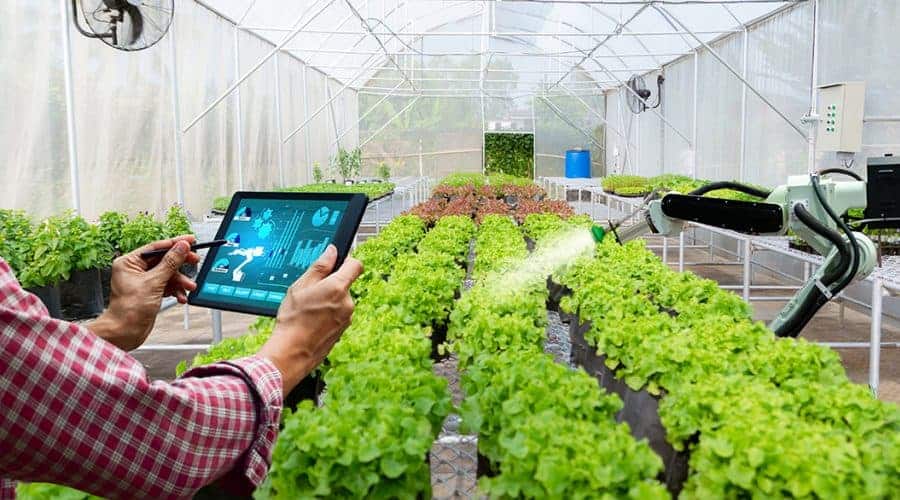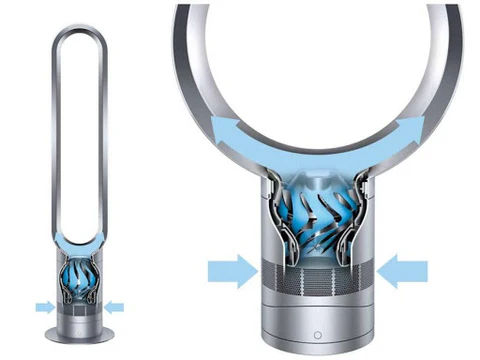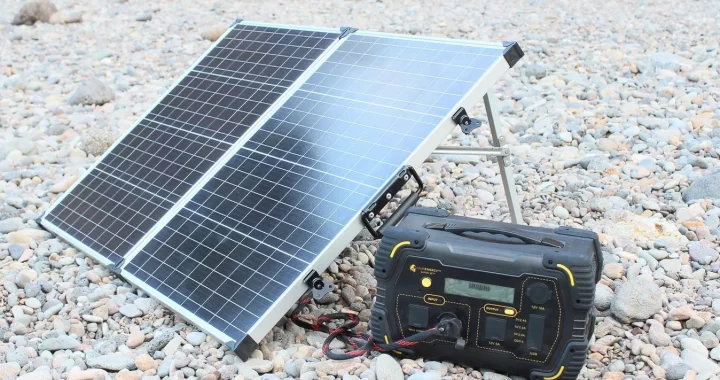How Sensors Can Improve Farming Yield and Sustainability

In the agricultural industry, which is always changing, achieving higher yields and using sustainable practices has become crucial. Feeding the world while reducing our environmental effect is a huge task because of the world’s population growth. Thankfully, the incorporation of advanced technology—more especially, sensors—has proven to be a game-changer, completely altering the way we think about farming. We’ll look at how sensors may greatly increase farming productivity and sustainability in this in-depth tutorial, opening the door to a safer and more environmentally friendly future.
Precision Agriculture: The Future of Farming

Precision agriculture is a contemporary method that maximizes crop management techniques by utilizing cutting-edge technologies, such as sensors. Farmers may make well-informed decisions that are customized to the unique requirements of their fields, crops, and environmental circumstances thanks to the real-time data and insights that sensors provide.
The Power of Data-Driven Farming
The core of data-driven farming is sensors, which gather essential data on many facets of the agricultural ecosystem. Among the important pieces of information that sensors collect are:
- Soil Moisture Levels: Keeping an eye on soil moisture levels enables farmers to better plan their irrigation strategies, giving crops the correct quantity of water at the right time to maximize production and minimize water waste.
- Nutrient Levels: By using sensors to measure the nutrients in the soil, fertilizer may be applied precisely and specifically, limiting overfertilization and having a less negative impact on the environment.
- Weather Conditions: Farmers can make more educated planting, harvesting, and pest control decisions by monitoring temperature, humidity, rainfall, and wind patterns.
- Crop Health: Modern sensors are able to identify early indicators of illness, pest infestations, and nutrient shortages, allowing for prompt crop yield protection measures.
Sensor Technologies in Agriculture
The agricultural industry has embraced a wide range of sensor technologies to enhance farming practices and boost sustainability. Here are some of the most impactful sensor applications:
- Soil Moisture Sensors: These devices gauge the amount of water present in the soil, offering useful information for effective irrigation scheduling, water saving, and enhanced crop development.
- Nutrient Sensors: By analyzing soil nutrient levels, these sensors help farmers determine the precise fertilizer requirements, reducing waste and minimizing the environmental impact of excessive fertilizer use.
- Weather Stations: Weather stations, which are outfitted with an assortment of sensors, monitor precipitation, temperature, humidity, and wind speed, thereby empowering agricultural practitioners to make well-informed judgements regarding crop protection, sowing, and harvesting.
- Optical Sensors: These advanced sensors use light to detect plant health, nutrient deficiencies, and stress levels, allowing for early intervention and yield preservation.
- Drone-Based Sensors: By utilising unmanned aerial vehicles (UAVs) outfitted with specialised sensors, it is possible to acquire high-resolution imagery and data, which in turn furnishes extensive knowledge regarding soil conditions, pest infestations, and crop heath over vast expanses.
- Internet of Things (IoT) Sensors: IoT technology enables the seamless integration of various sensors, facilitating real-time data collection, analysis, and automated decision-making processes for efficient farm management.
Benefits of Sensor-Driven Farming

The integration of sensors in agriculture offers numerous benefits that contribute to improved farming yield and sustainability:
- Increased Crop Yields: By optimizing irrigation, nutrient management, and pest control, sensors help farmers maximize crop productivity, leading to higher yields per acre.
- Water Conservation: Precise irrigation scheduling based on soil moisture data minimizes water waste and ensures efficient water usage, a critical factor in regions with limited water resources.
- Reduced Environmental Impact: Targeted fertilizer application and responsible water management practices enabled by sensors help reduce soil degradation, water pollution, and greenhouse gas emissions.
- Cost Savings: By optimizing resource utilization and minimizing waste, sensor-driven farming can lead to significant cost savings for farmers, improving their profitability and long-term sustainability.
- Improved Crop Quality: Sensors can detect nutrient deficiencies and stress factors, allowing for timely interventions that maintain crop quality and ensure consistent yields.
- Data-Driven Decision Making: The wealth of data provided by sensors empowers farmers to make informed decisions based on real-time information, leading to more efficient and effective farm management practices.
Integrating Sensors into Farming Practices
While the benefits of sensor-driven farming are undeniable, successful integration requires a strategic approach. Here are some key considerations:
- Sensor Selection: Choose sensors tailored to your specific farming needs, crop types, and environmental conditions to ensure accurate and relevant data collection.
- Data Management and Analysis: Implement robust data management systems and analytical tools to effectively process and interpret the vast amounts of sensor data, enabling informed decision-making.
- Training and Education: Provide comprehensive training and education to farmers and agricultural workers on the proper use and interpretation of sensor data, ensuring successful implementation and maximizing the benefits of these technologies.
- Collaboration and Knowledge Sharing: Foster collaboration among farmers, researchers, and industry experts to share best practices, insights, and innovative solutions for sensor-driven agriculture.
- Investment and Scalability: Explore funding opportunities and develop scalable strategies to ensure the widespread adoption of sensor technologies across various farm sizes and regions.
Frequently Asked Questions (FAQ)
1. How accurate are sensors in agriculture?
Modern agricultural sensors are designed to provide highly accurate and reliable data. However, proper calibration, maintenance, and data analysis are crucial to ensure the accuracy of sensor readings.
2. Are sensors expensive to implement in farming operations?
The initial investment in sensor technologies can be significant, but the long-term benefits in terms of increased yields, resource optimization, and cost savings often outweigh the upfront expenses.
3. Can sensors be integrated into existing farming equipment and infrastructure?
Yes, many sensor technologies are designed to be compatible with existing farm machinery and infrastructure, allowing for seamless integration and minimal disruption to existing operations.
4. How does sensor data help with sustainable farming practices?
By providing real-time information on soil conditions, nutrient levels, and water usage, sensors enable precise and targeted applications of resources, minimizing waste and reducing the environmental impact of farming activities.
5. Are there concerns about data privacy and security with sensor-driven farming?
Data privacy and security are valid concerns, and robust measures must be implemented to protect sensitive farm data from unauthorized access or cyber threats. Collaboration between farmers, technology providers, and regulatory bodies is crucial to ensure data integrity and privacy.

 Best Image Editors for Your Mac in 2024
Best Image Editors for Your Mac in 2024  Best 5 AI-powered Voice Changer Tools for Creative Production
Best 5 AI-powered Voice Changer Tools for Creative Production  The Ultimate Guide to Bladeless Fans: Revolutionizing Air Circulation
The Ultimate Guide to Bladeless Fans: Revolutionizing Air Circulation  A Comprehensive Review of the HONOR Magic 6 Pro
A Comprehensive Review of the HONOR Magic 6 Pro  Why You Need a Portable Solar Panel
Why You Need a Portable Solar Panel  What Does a FileMaker Developer Do?
What Does a FileMaker Developer Do?  The Art and Importance of Designing Safe and Effective Horse Jump Standards
The Art and Importance of Designing Safe and Effective Horse Jump Standards  The Art of Compromise: Resolving Family Disputes Amicably
The Art of Compromise: Resolving Family Disputes Amicably  The Benefits and Challenges of Sustainable Roofing for Commercial Buildings
The Benefits and Challenges of Sustainable Roofing for Commercial Buildings  Transforming Your Home with Terrazzo Flooring: A Timeless Choice for Elegance and Durability
Transforming Your Home with Terrazzo Flooring: A Timeless Choice for Elegance and Durability